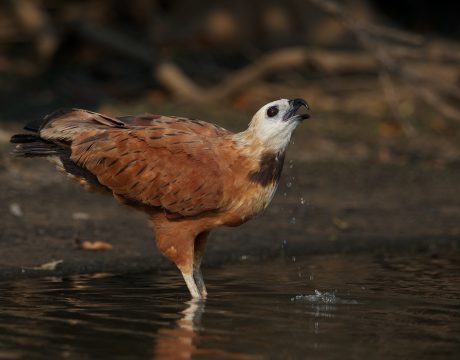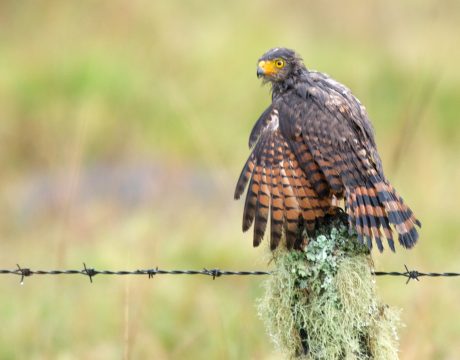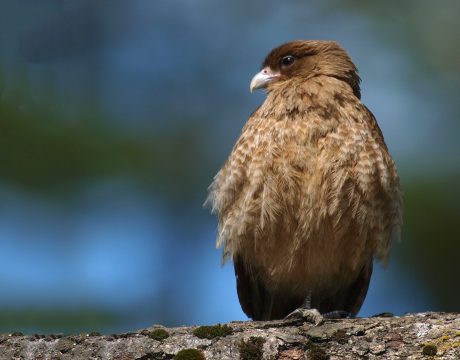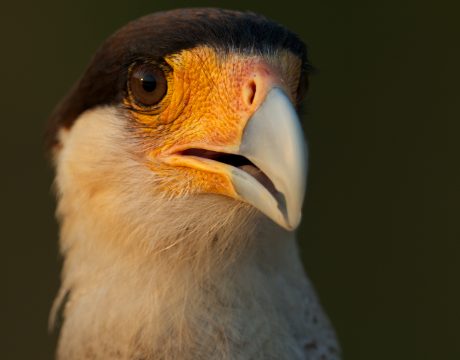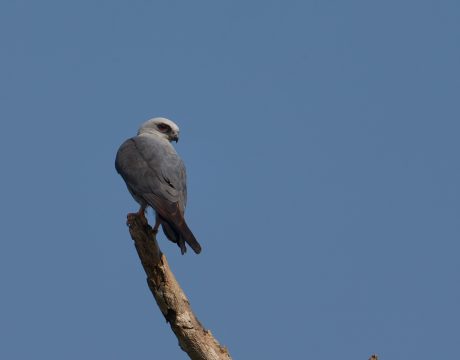Return of Bird of the Week: Variable Hawk
Not all bird species are aptly named. But the Variable Hawk certainly is. The cinnamon color in these two photos is likely the least common color phase, which ranges from whitish to very dark gray. Some ornithologists describe it as the most variable hawk in the world in coloration. At least 27 distinct adult plumages are known in this species. Across all plumages, it has a whitish tail with a strong, black terminal band. It varies in size, too, ranging from 18 inches to 25 inches in length. The taxonomy of the species is not well understood, either. Currently, it’s…
Return of Bird of the Week: Crane Hawk
The Crane Hawk is a medium-sized accipter with a very wide distribution, extending from Mexico to northern Argentina. While it is never found in large numbers across that extended range, there are believed to be about 50,000 birds. But that’s guess; surprisingly little is known about the species. The most notable feature of this species are those very long legs. The legs are nearly unique among raptors in that they are “double-jointed,” able to bend in both directions. Stated technically, it has an intertarsal joint that allows flexible forward and backward bending of its legs The leg length, long outside talons…
Return of Bird of the Week: Black-collared Hawk
It’s a gorgeous bird, bright cinnamon with thin black lines, a white head and the black bib that gives the species its common name. It’s unmistakeable in the field. And while it is an Accipter – like a Sharp-shinned or Cooper’s Hawk in North America – it’s evolved into a different ecological niche entirely. This is the Neotropics’ analogue to an Osprey, a species that primarily hunts and feeds on fish. It’s widely distributed, from Mexico to Argentina. As you’d expect from its diet, it is most frequently found along waterways, but rarely at high densities. It’s monotypic – the…
Return of Bird of the Week: Roadside Hawk
Ubiquitous in Central and South America, and easily seen because it prefers forest edges, including roadsides, it might be the most commonly seen raptor across its range. It’s certainly been a rare trip to the Neotropics that WC hasn’t seen one. This Roadside Hawk’s effort to dry out nicely displays the rufous patches in the wings and the strong barring in the tail, distinctive field marks for this species. This is a small raptor, averaging about the size of a Cooper’s Hawk, but with rounded, slightly stubby wings. It’s arguably the smallest Buteo. This species is a generalist, adapting to…
Return of Bird of the Week: Chimango Caracara
There are about ten species of Caracara, spread across five genera. Here’s another. The Chimango Caracara is found in the southern half of South America, from southern Brazil to the tip of Argentina. It’s a smaller, somewhat drabber member of the subfamily, and, at least in Tierra del Fuego, fills the ecological niche of ravens and vultures: it’s mostly a scavenger and opportunistic predator, and a generalist, eating everything from bugs to dead cattle. The apparent apron in this photo is a consequence of the strong wind blowing from behind the bird. The wind is usually blowing strongly in Tierra…
Return of Bird of the Week: Striated Caracara
The Striated Caracara is a large, dark raptor, with a wingspan of about four feet, a little larger in the females. It has a very restricted range, limited to islands off extreme southern South America, the Falkland Islands and various islands, mostly to the south of the Beagle Channel and coastal areas of Isla Grande de Tierra del Fuego. It is very dark brownish-black overall, with white stippling on the breast and upper belly, a dark chestnut lower belly and undertail coverts, a white band on the tail, and a yellow cere. It’s found along rocky coasts and nearby open…
Return of Bird of the Week: Southern Crested Caracara
Caracaras are a subfamily of Falconidae, the same family that includes North America’s falcons. Exactly which subfamily is a matter of some dispute; the taxonomy of Caracaras is unsettled.[^1] Probably the most common Caracara in South America is the Southern Crested Caracara.[^2] The species is somewhat like a Bald Eagle in that it is both a predator and a scavenger. It has almost no fear of humans and bullies Black and Turkey Vultures off of carrion. Its wingspan is a little over four feet but the head and bill, as you can see here, are massive. The talons are pretty…
Return of Bird of the Week: White-tailed Kite
You can readily see why it is called a White-tailed Kite. The photo also shows those distinctive black shoulders, the two-toned tail and that very distinctive hovering posture. It’s a bit smaller than the other Kites, but still a decent-sized raptor, with a wing span of 42 inches. The populations and even the range of this species has been on a roller-coaster the last 100 years. The species’ preferred habitat is open grasslands and savannah-like habitats. It has benefited somewhat from humankind’s conversion of forests to pasture, but suffered from the conversion of grasslands to monoculture agriculture. It was threatened…
Return of Bird of the Week: Plumbeous Kite
WC is continuing with kites, mid-sized raptors, not the human-made flying objects named after the birds. This week we’ll have a look at the Plumbeous Kite. The Plumbeous Kite takes its name from its dark gray, well, leaden color. “Plumbeous” is from the Latin for “lead.” It’s quite similar in appearance to the Mississippi Kite, which shares its range in migration and during the winter. It ranges from northern Mexico to northern Argentina. It feeds on insects from a perch or while in flight over the forest, particularly over the canopy or along edges. Some Plumbeous Kites also follow primates…







